Building of the Day: 54 Greene Avenue, More Than Meets the Eye
Brooklyn, one building at a time. Name: Row house Address: 54 Greene Avenue Cross Streets: Corner Adelphi Avenue Neighborhood: Fort Greene Year Built: 1868 Architectural Style: Italianate (once) Architect: Thomas Skelly (builder) Landmarked: Yes, part of Fort Greene Historic District (1978) The story: Most of Fort Greene was developed in the busy years just after…
Brooklyn, one building at a time.
Name: Row house
Address: 54 Greene Avenue
Cross Streets: Corner Adelphi Avenue
Neighborhood: Fort Greene
Year Built: 1868
Architectural Style: Italianate (once)
Architect: Thomas Skelly (builder)
Landmarked: Yes, part of Fort Greene Historic District (1978)
The story: Most of Fort Greene was developed in the busy years just after the Civil War. Brooklyn’s population soared due to manufacturing and business growth. The population began to spread eastward from Brooklyn Heights, aided by better roads and public transportation.
Small developer/builders such as Thomas Skelly bought as many lots as they could in Fort Greene, and built hundreds of row houses, most in some variation of the popular Italianate style.
Skelly built all ten houses on this side of the block, between Adelphi and Clermont. He built them in two groups; numbers 54-66 were built in 1868. Their stoops and doorways were built on the left. Numbers 68-72 were built in 1869, and their stoops and doorways are on the right.
All of the houses in this group survived the century and a half pretty much intact, except today’s house, number 54.
Christopher Bride for PropertyShark
The first owner of 54 was John H. McCauley, a stove dealer. He’s on record until the late 1870s.
A later owner was Dr. Melville Bryant. He was the son of Dr. Joel Bryant, said to be the first homeopathic physician to practice in Brooklyn. The senior Dr. Bryant had three sons, all of whom became doctors.
Dr. Melville Bryant died in 1893, from an overdose of morphine. It turned out he had been self-medicating for an illness and had been an addict for years, according to another doctor. In spite of that, there were questions as to whether or not he had been poisoned by his servant, a man named Rose.
Just before his death, Bryant noticed he was missing a gold watch and other valuables. He suspected his servant, and wrote a letter to a police detective. Then he overdosed.
The detective didn’t know Dr. Bryant, so he didn’t get around to answering the letter until after Bryant’s death. But he did solve the case, finding the objects among the servant’s possessions just after the funeral.
Google Maps
Drama didn’t decrease with future owners, several of whom were also doctors. This corner location with a large rear extension was perfect for a physician’s office.
By 1900, the house was home to another doctor, Henry G. Preston, and his family. He was the chief physician at the Hospital and Home for Epileptics. He and his wife had a son, Henry, Jr., and a daughter, Anna Louise.
The Prestons were wealthy, but their son wanted to go his own way. After getting his education, he worked as a sailor on a merchant ship, and then settled down in New London, Conn. as a farmhand. The locals could tell he was an educated lad, but knew nothing about him. He gave his name as Harry Price.
He was well liked, and very popular with the girls, resulting in a scandal regarding the local school mistress, who ended up leaving town. He stayed in Connecticut for two years.
Harry’s downfall came in November of 1900, when he stole a team of horses and a carriage, rode it to another town, and then caught the train to New York. The police were calling at 54 Greene Ave. looking for him.
The press was there too, but the doctor and his wife were not talking. Everything was quietly straightened out, and nothing appeared in the news. Harry did not go to prison.
Whatever young Preston was up to, it didn’t end well. He was said to have reformed, but he showed up at his parents’ home on Feb. 6, 1906 suffering from nervousness and the shakes. His father tried to treat him, but young Harry went into spasms and died of an apparent heart attack hours later.
Google Maps
The next owners were the Thompsons. Colonel George Thompson was a Civil War veteran, wounded in the Battle of Spotsylvania, Virginia. He was the owner of the Diamond Paper Mills, manufactures of all kinds of paper. The Colonel died in 1910; after that his widow Josephine lived here until her death in 1924.
Another doctor, William B. Eberling, lived here next, with his family. The Ebeling girls made the papers for the usual society doings, but the good doctor was picked up by the police in 1931 after being accused of “accosting” a 12-year-old girl, by offering her a ride in his car as she walked to church.
He was released for lack of evidence, and told the judge he didn’t know if it was right or wrong to offer a girl a ride, but it hadn’t been him, in the first place. The magistrate noted that it was not a crime to offer a child a ride.
The house disappears from the papers after this. But it seems to have been used as offices for health related concerns for much of the latter part of the 20th century. It is not known when all of the details were stripped from the house, and the house was covered in tiny white tiles.
Photo: B. Millstein
Perhaps someone thought white was more “sanitary,” or clean looking, because of its use as a health facility. But why the tiles?
The details were removed long before the house and the rest of the block were landmarked in 1978. The designation report mentions the tiles and the loss of all details.
The building passed through many hands from the 1970s onward. According to city records, it belonged to the Adelphi Hospital Corp. and was the Adelphi Mental Health Clinic in 1972. It then reverted to the city in 1978, and was issued a vacate order by the city in 1982.
The city held the building until 2014, when it was purchased by an LLC. While still city-owned, it had been used by the Paul Robeson Theater group, which has its headquarters on the next block. Other local organizations also used space in the building.
Today, the building is listed as an office building. It is currently empty, with a permit on the window. All traces of the wealthy doctors, merchants and industrialists are long gone. Who would guess this house had such an interesting history?
This house was suggested to me by a reader. He wondered about the tiles, and the history of the building in general. It seemed so incongruous on this historic block. B. Millstein, thanks for the suggestion and the photos.
Top photo: Scott Bintner for Property Shark
Photo: B. Millstein

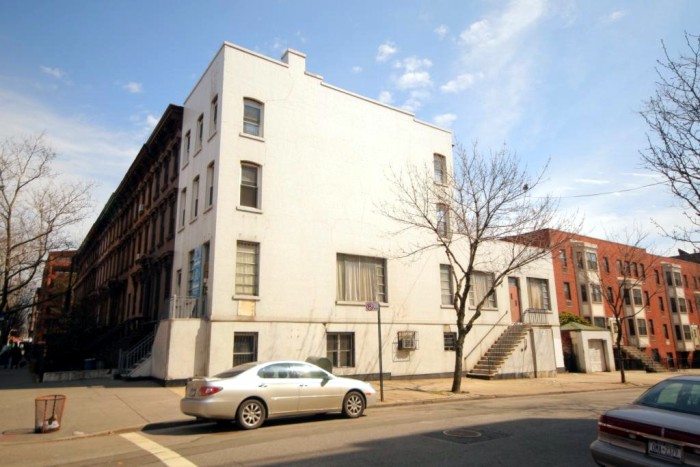
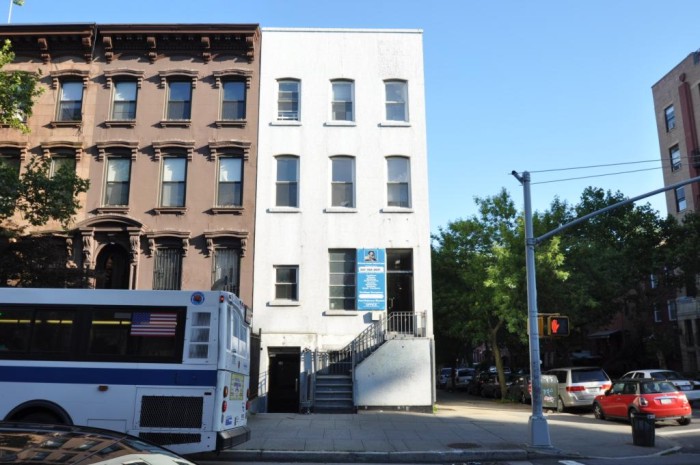
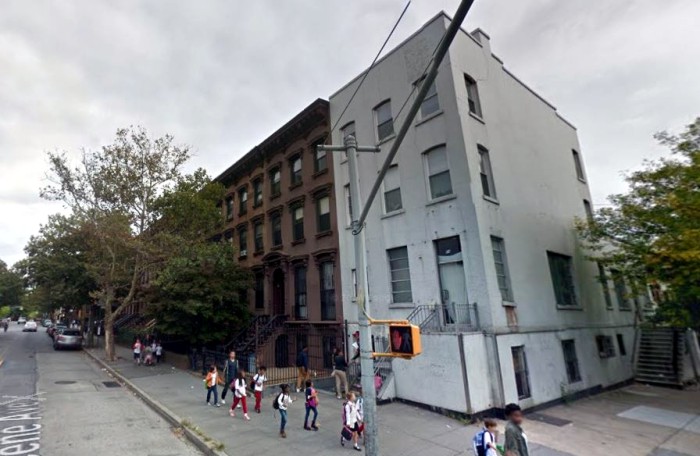
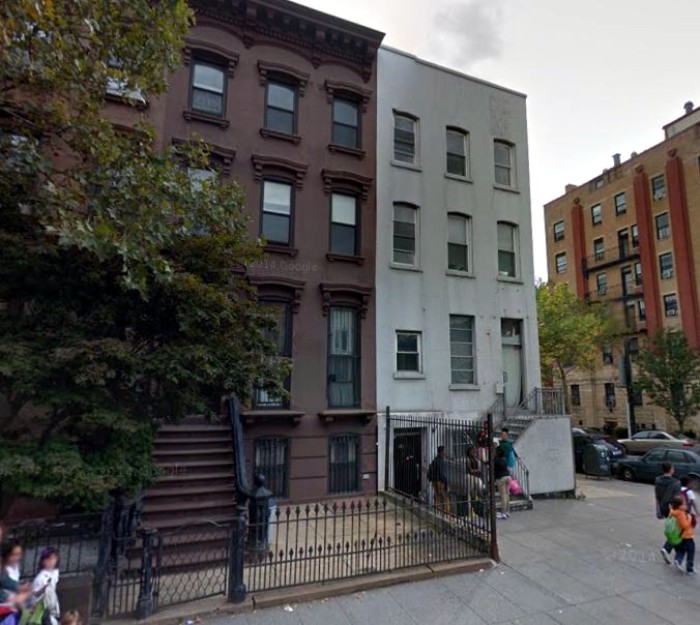
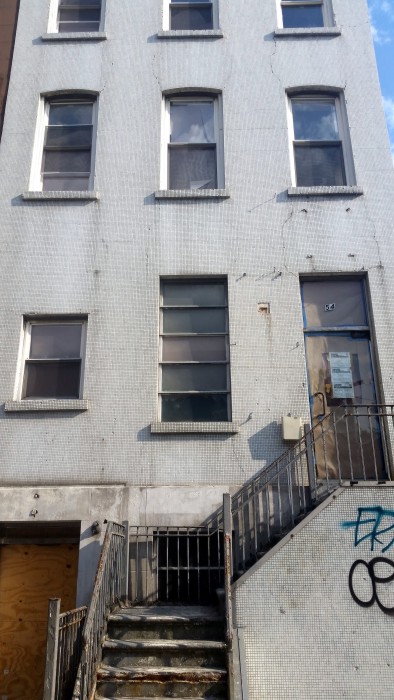
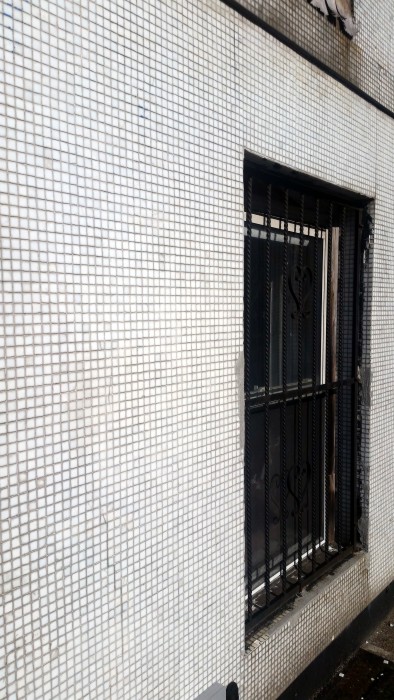








What's Your Take? Leave a Comment